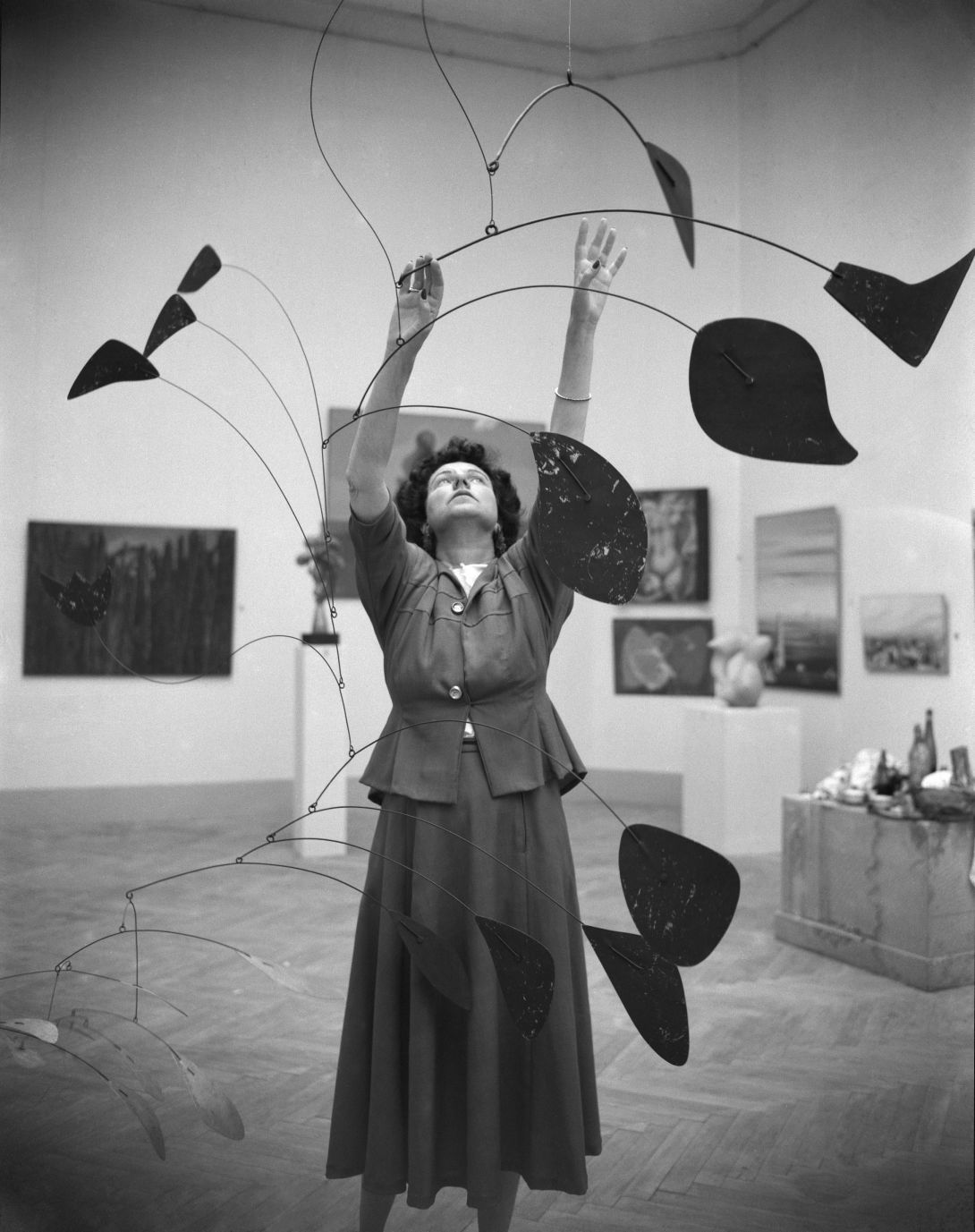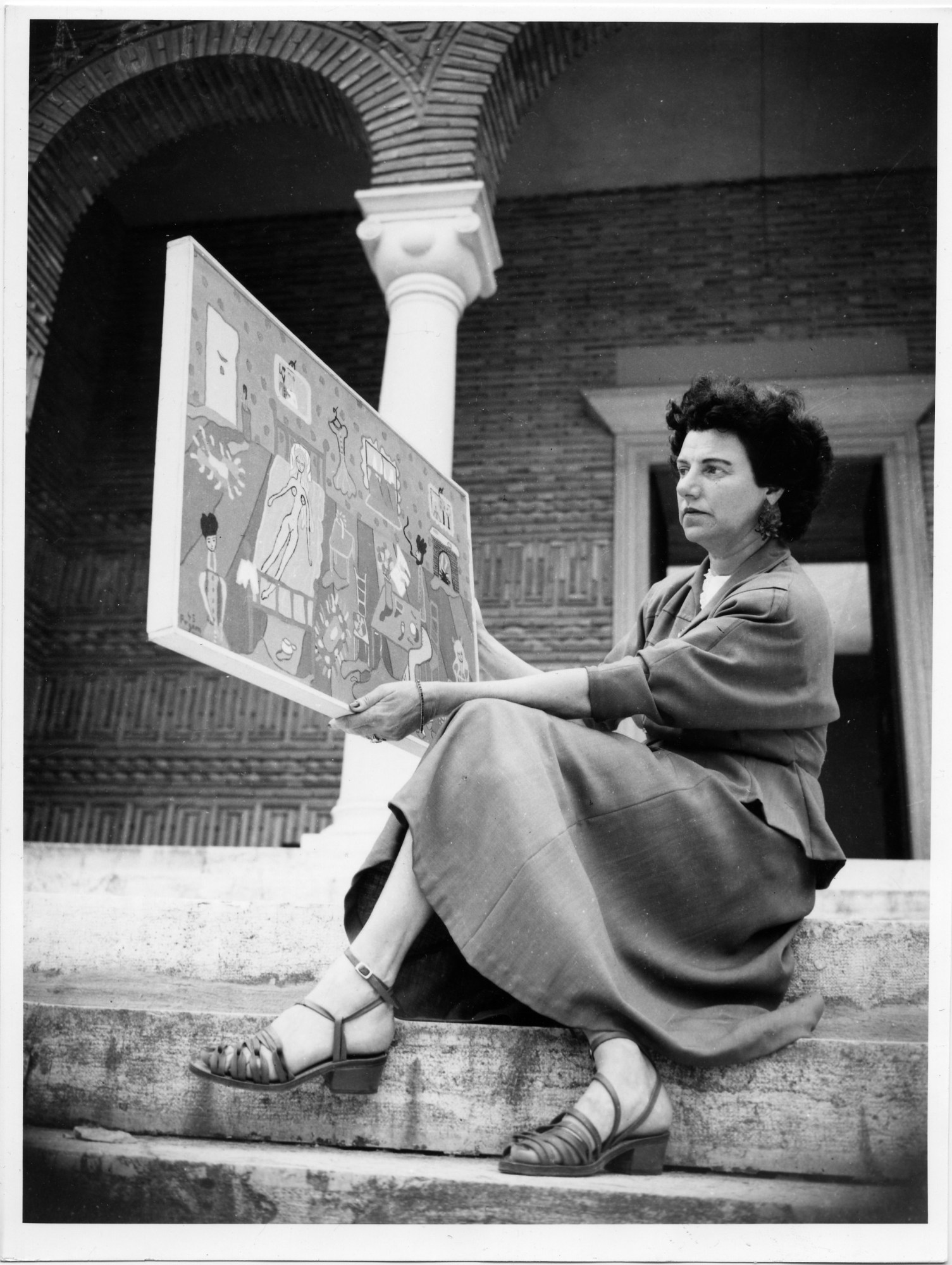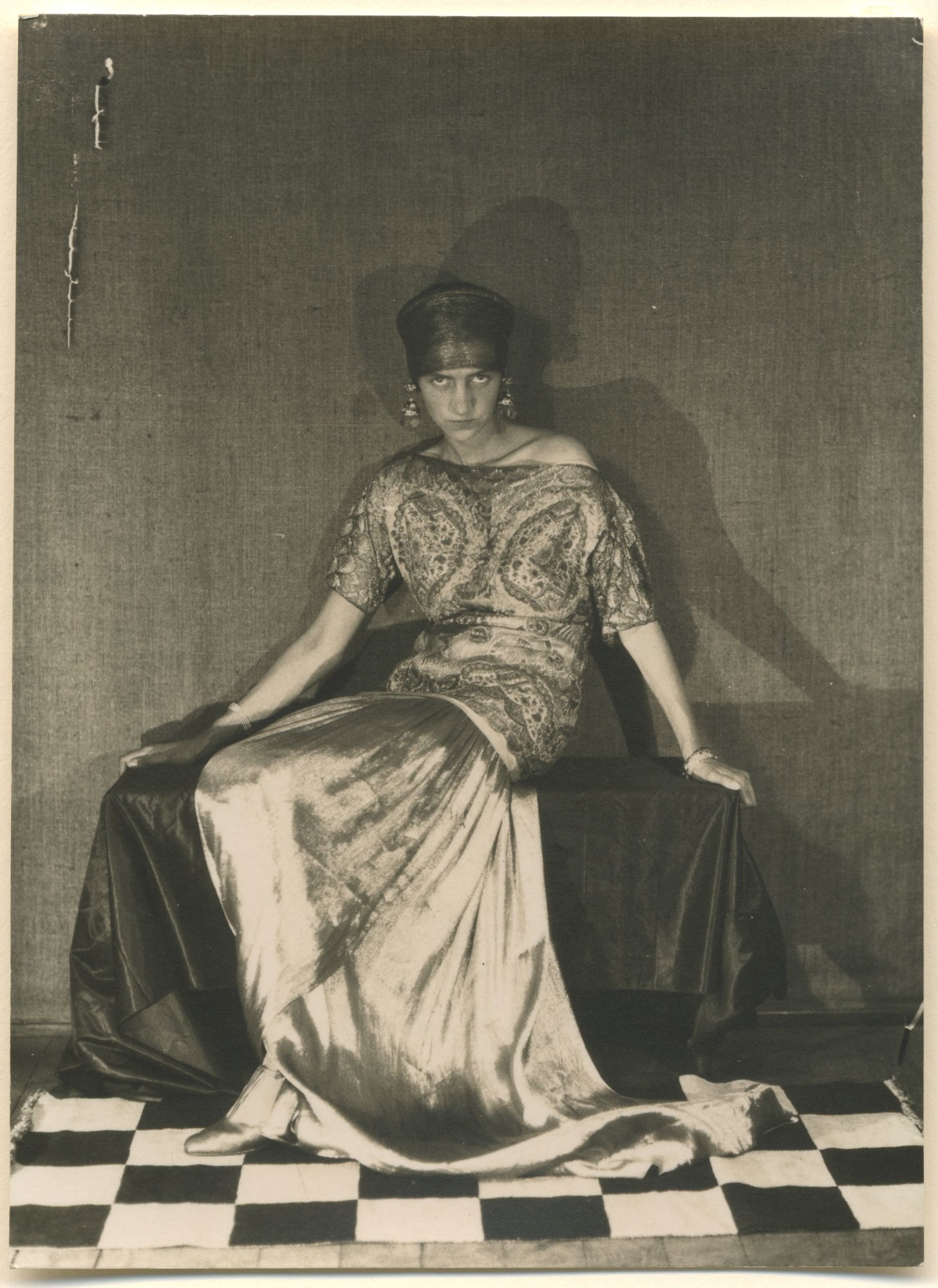The pioneer American art collector Peggy Guggenheim is the subject of an exhibition at Venice’s Ikona Gallery, which features 21 images in a collection titled Peggy Guggenheim in Photographs. This exhibition, which runs until November 27, captures Guggenheim’s spirit—a freewheeling collector who fed off the creativity of the artists around her. She helped write the history of 20th century art with her sprawling collection of European and American art. Guggenheim wild personal life was often the subject of much speculation, but her real importance lies as one of the first and few female art collectors.
Guggenheim was the daughter of Benjamin Guggenheim, and when her father died in the Titanic, she inherited $34 million when she was just 21-years-old. Growing up in New York, Peggy was said to always feel like the black sheep of the family, until she moved to Paris in 1920 and made contact with the art scene through her first husband, Laurence Vail. Growing up in the bourgeois, she felt like an outsider to the bohemian life until this first meeting with the art scene, who she described as “my people.”

She used her inheritance to develop an art collection between 1938 and 1946, buying European and American art, including works by Pablo Picasso, Joan Miro and Rene Magritte. Up until 1960s (which is when she stopped collecting), Guggenheim had a goal of buying one artwork a day.
In 1938, Guggenheim opened her first gallery in London followed by a New York gallery where she showed her collection of cubist, abstract and surrealist artworks. While most of us look back on modern masters like legends, they weren’t always that way. Guggenheim helped develop the careers of artists like Clyfford Still and Jackson Pollock, who she gave his first solo show in 1943 (at the time, he was working as a carpenter).
What made Guggenheim unique was that she carved out art collecting in a way which wasn’t done before—she bought surrealist art by Yves Tanguy, Jean Arp and Andre Breton before it was high priced; Man Ray and Salvador Dali were just underground artists known primarily in Europe. She pushed their careers. And the art she bought of emerging artists helped define the rising avant-garde before it hit the mainstream. Guggenheim was known for eccentric taste and how the artwork she bought reflected her own inner mystery. She was known for her business smarts, practicality and for carving out a niche for herself. Driven and accomplished, what set her apart was that she promoted both European and American modern art; with one, she always had the other.

But some of her accomplishments have been downplayed in comparison to her voracious sex life—which she was open about. Even though her male counterparts were as equally promiscuous, her reputation suffered because of it. Throughout her life, Guggenheim fought for credibility in the male-dominated art world. Regardless of the gossip that surrounded her personal life, Guggenheim inspired women to be independent, follow their dreams and do they want to do; whether they were entrepreneurs or artists.
The photos in this exhibition aim to show who Guggenheim was behind her prestigious name. One photo shows her in Paris in 1924, and was taken by Man Ray, who was known for shooting the art world elite across Europe. As the Parisian book publisher Sylvia Beach once said, if you were shot by Man Ray, “you were rated as somebody.” The photo was taken after the birth of her first child, Sindbad, who she had with Vail. Guggenheim remembered this shot as “sensational,” as she loved the strength she portrayed in the stare she’s giving the camera.
The photographers that surrounded Guggenheim managed to capture her confidence, candour and personality during her gallery days, trips abroad and at home with artists and writers who became her lifelong confidants and companions.

The show is curated by Ikona Gallery director and founder Ziva Kraus, a Croatian artist who is a former employee of Guggenheim, having worked for her in 1973. “When I met her for the first time in 1966, she was seated in her gallery, with the large room of Pollock’s paintings nearby,” said Kraus. “I am reminded of Peggy’s Jewish origin, of her flight to Europe, leaving her glorious family behind in New York, which had in turn left Switzerland for America in the 19th century. One cannot love the art of today without thinking instantly of the Guggenheim Museums.”
Other iconic photos in the show features Guggenheim and Pollock, which was taken by George Karger in 1946. Standing with her dogs in her arms in New York City, they’re in the lobby of her apartment where she commissioned him to create a mural in 1943; the biggest one he ever made.
A selection of shots in the show feature Guggenheim at her beloved home in Venice, where she bought a sprawling palazzo on the Grand Canal and opened her namesake museum to the public in 1951, and where she lived for the next 30 years.
The photos also capture Peggy’s professional side. There is one shot from 1948 by Dino Jarach, where Guggenheim is installing a mobile by Alexander Calder at the Venice Biennale. Another shot by Ida Kar shows her standing confidently before her 18thcentury palazzo turned museum in Venice after opening her first exhibition in 1951.
Credits
Text Nadja Sayej
